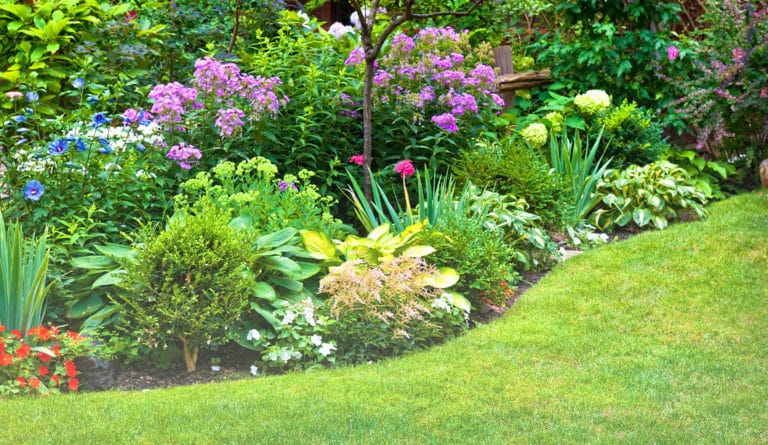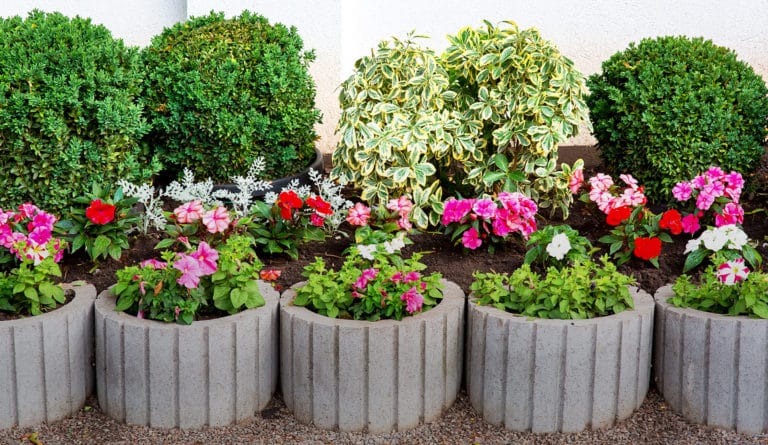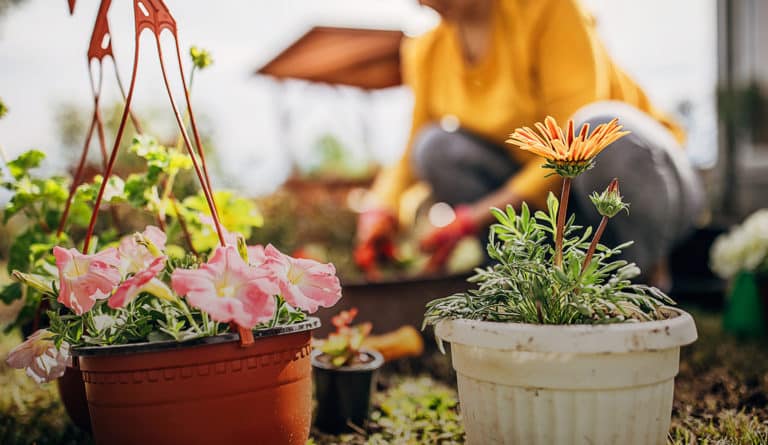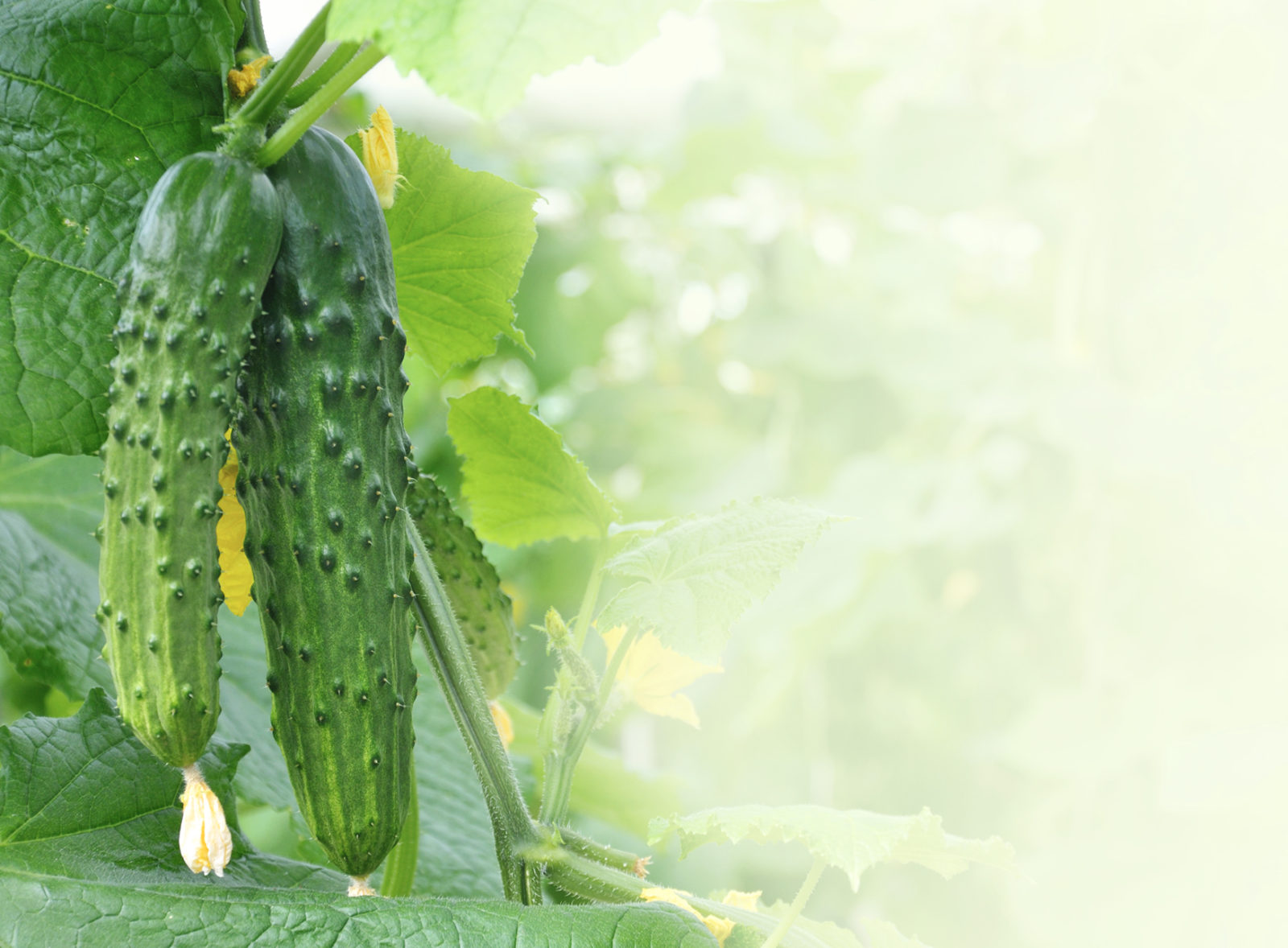
cucumbers
aka Cucumis Sativus
Crunch! Cucumbers are delicious in salads, and the perfect gateway to your new obsession with pickling. Their vines want to run wild, but they are trainable.
variations
Armenian Cucumber, English Cucumbers, Lemon Cucumbers and Persian Cucumbers, and almost 100 more varieties!
light
full sun
Cucumbers like about 8 hours of sunlight a day.
water + feeding
thirsty friends
The thirsty vines of the Cucumber need at least 1 inch of water per week. And if your cucumbers are out in full sun, get ready to water a lot!
toxic
non-toxic
Cucumbers are non-toxic and even make delicious, hydrating snacks for cats and dogs.
size
medium
Smaller cucumber varieties are best grown to about 4 inches (10 cm). Longer varieties like English cucumbers can grow 6 to 8 inches (15–20cm). General rule, smaller is better. Don’t let them overgrow or they may get soft and bitter.
pro tip
oh shoot!
When a vine has grown 7 leaves, pinch off the growing tip. The vine should develop side shoots that you can leave on the ground, or train up a trellis or netting.
fun fact
super hydrater
Raw cucumbers are 95% water! They’re also 100% delicious.
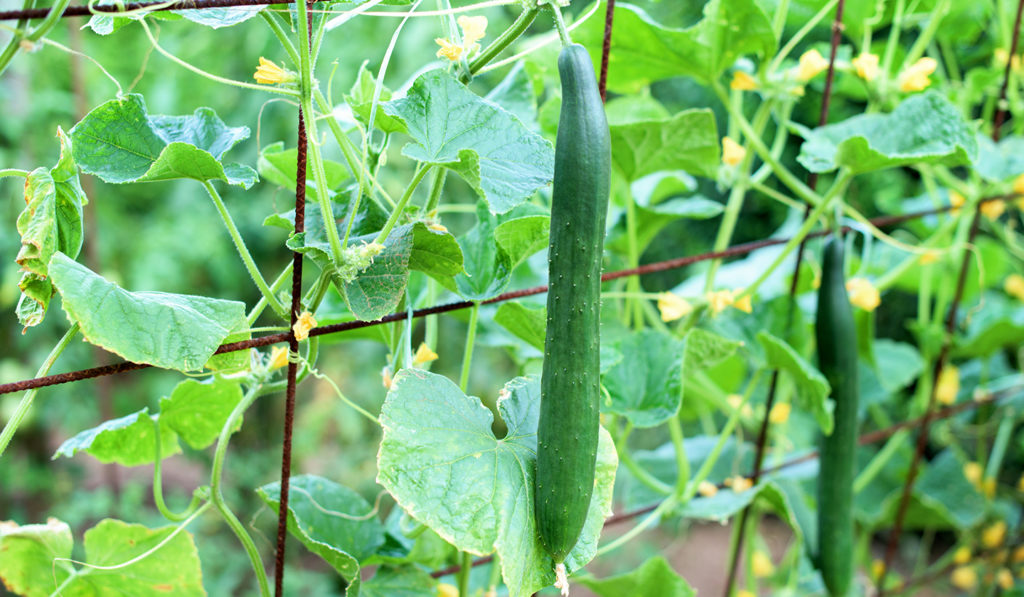
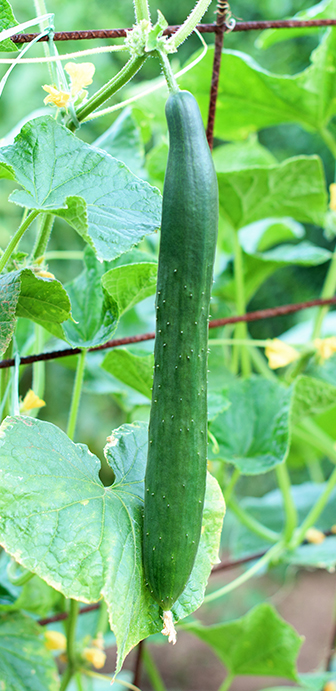
beyond the basics
-
soil & potting
Cucumbers need warm soil to germinate. Find a spot with good light and well–draining soil. Plant seeds in mounds about 1 inch deep. Give that little seed or container seedling lots of space, once they get growing, their vines really spread out to boost growth, feed the soil with dolomite lime, compost or Miracle-Gro® Shake ‘n Feed Tomato, Fruit & Vegetable Plant Food.
-
companion planting
Cucumbers work well beside asparagus, beans, Brassicas, celery, corn, dill, kohlrabi, lettuce, onion, peas, radish, and tomatoes. Avoid potatoes and sage. Sunflowers and cornflowers make a beautiful natural trellis for cucumber vines to climb. Dill attracting beneficial predatory insects that eat pests. The nasturtium flower repels pests and is even thought to improve a cucumber’s taste.
-
harvesting
Harvest time! Your cucumbers should be uniformly green, firm, and have a slightly rounded tip. They grow rapidly, so check them often. Be sure you don’t miss any under the leaves. Once they become yellow, bulbous or soft, they’re overripe. A little early is better than too late.
-
pest control
What are these little white flies? They are literally Whiteflies. They drink sap and excrete a sticky ‘honeydew’ which also encourages mould. Use sticky traps or Ortho® Bug B Gon® ECO Insecticidal Soap to keep your cucumbers healthy. Another common pest is the cucumber beetle. These little guys can be found on your seedlings, just as they’re starting to grow up. If you don’t catch these beetles soon enough, their larvae will feed on the plant and kill it. Cucumber beetles also spread bacteria and viruses when they move from plant to plant. To get rid of these little pests, try using sticky traps. You could also knock the beetles off your plant and catch them in a little piece of cardboard or a small jug.
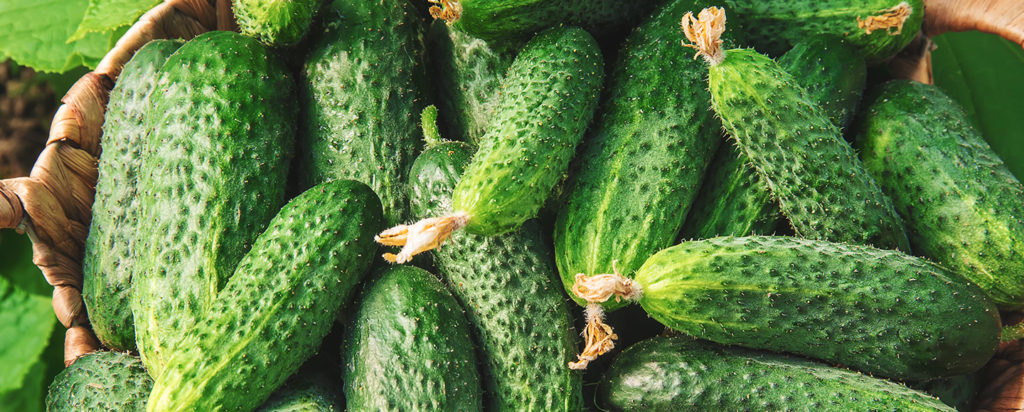
troubleshooting
-
what ate my stems right near the soil level?
Probably Cutworms. Check the soil for gray grubs about 1/2 inch (1 cm). They love to eat stems, roots, and leaves. Protect your vines with a 3 inch paper collar around the base. You can also sprinkle wood ash around the base. It helps to keep your garden weed free.
-
drooping or wilting leaves?
Needs water. Does your Pothos look wilted and droopy? Do those normally perky heart-shaeped leaves feel thinner? Your poor Pothos is crying out for a drink. Instead of doing one giant dump of water, water a little once per day for three days. You want the soil pleasantly moist, not super soggy. Your Pothos should bounce back in just a few days.
-
why do I have deformed or yellow leaves?
Likely Aphids. Look for teeny-tiny oval, and yellowish– green pear-shaped insects, clustering under the leaves. They excrete a sticky waste called honeydew (far too pleasant a name) which turns into black powdery mold. Treat with insecticidal soap.
-
why are my smaller plants turning yellow?
Sounds like Southern corn rootworm. They’re the larval form of the spotted cucumber beetle. Turn over the soil in your garden to interrupt this pest’s destructive life cycle.
-
what’s this white, powdery stuff?
It’s a fungus called Powdery Mildew. It forms white spots on the leaves or even the stems. Left un-checked it can turn the leaves yellow or even brown. Lack of airflow is the cause, so do what you can to clear around your plants. Remove infected leaves. To fight the mildew, your garden centre will have a spray containing sulfur.
-
no fruit coming through?
It’s a plant sex thing. A cucumber’s first flowers are male, followed by female flowers. Only the female flowers produce cucumbers, so you may just need to wait a bit, until the female flowers get pollinated. If there aren’t enough pollinators (like bees) in your area, you can plant flowers in your garden to attract them. Or, be the bee! Pick some male flowers and dust their pollen on the female flowers.

cucumbers
aka Cucumis Sativus
Crunch! Cucumbers are delicious in salads, and the perfect gateway to your new obsession with pickling. Their vines want to run wild, but they are trainable.
variations
Armenian Cucumber, English Cucumbers, Lemon Cucumbers and Persian Cucumbers, and almost 100 more varieties!
light
full sun
Cucumbers like about 8 hours of sunlight a day.
water + feeding
thirsty friends
The thirsty vines of the Cucumber need at least 1 inch of water per week. And if your cucumbers are out in full sun, get ready to water a lot!
toxic
non-toxic
Cucumbers are non-toxic and even make delicious, hydrating snacks for cats and dogs.
size
medium
Smaller cucumber varieties are best grown to about 4 inches (10 cm). Longer varieties like English cucumbers can grow 6 to 8 inches (15–20cm). General rule, smaller is better. Don’t let them overgrow or they may get soft and bitter.
pro tip
oh shoot!
When a vine has grown 7 leaves, pinch off the growing tip. The vine should develop side shoots that you can leave on the ground, or train up a trellis or netting.
fun fact
super hydrater
Raw cucumbers are 95% water! They’re also 100% delicious.
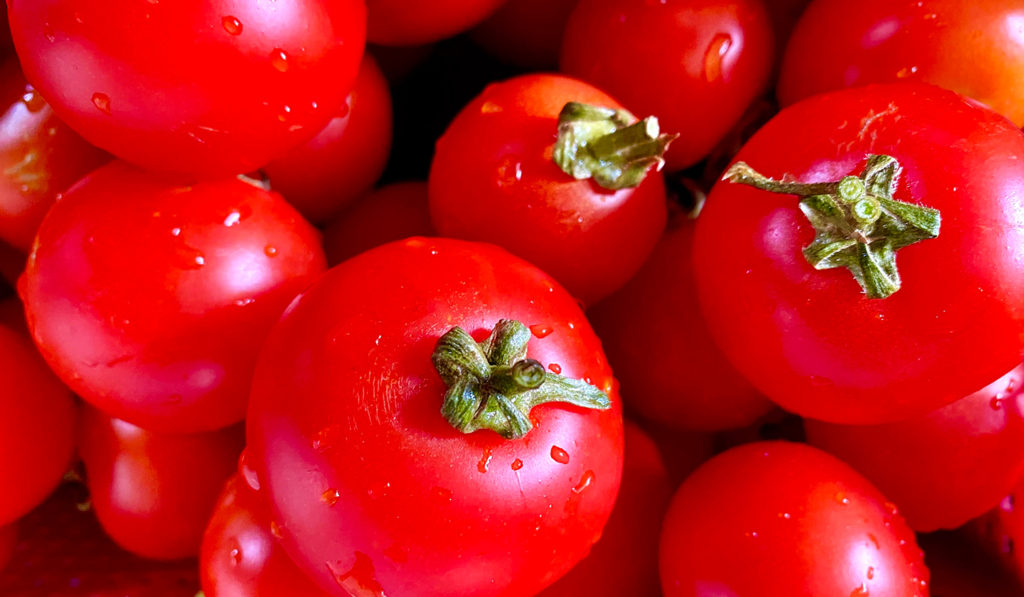

beyond the basics
-
soil & potting
Cucumbers need warm soil to germinate. Find a spot with good light and well–draining soil. Plant seeds in mounds about 1 inch deep. Give that little seed or container seedling lots of space, once they get growing, their vines really spread out to boost growth, feed the soil with dolomite lime, compost or Miracle-Gro® Shake ‘n Feed Tomato, Fruit & Vegetable Plant Food.
-
companion planting
Cucumbers work well beside asparagus, beans, Brassicas, celery, corn, dill, kohlrabi, lettuce, onion, peas, radish, and tomatoes. Avoid potatoes and sage. Sunflowers and cornflowers make a beautiful natural trellis for cucumber vines to climb. Dill attracting beneficial predatory insects that eat pests. The nasturtium flower repels pests and is even thought to improve a cucumber’s taste.
-
harvesting
Harvest time! Your cucumbers should be uniformly green, firm, and have a slightly rounded tip. They grow rapidly, so check them often. Be sure you don’t miss any under the leaves. Once they become yellow, bulbous or soft, they’re overripe. A little early is better than too late.
-
pest control
What are these little white flies? They are literally Whiteflies. They drink sap and excrete a sticky ‘honeydew’ which also encourages mould. Use sticky traps or Ortho® Bug B Gon® ECO Insecticidal Soap to keep your cucumbers healthy. Another common pest is the cucumber beetle. These little guys can be found on your seedlings, just as they’re starting to grow up. If you don’t catch these beetles soon enough, their larvae will feed on the plant and kill it. Cucumber beetles also spread bacteria and viruses when they move from plant to plant. To get rid of these little pests, try using sticky traps. You could also knock the beetles off your plant and catch them in a little piece of cardboard or a small jug.
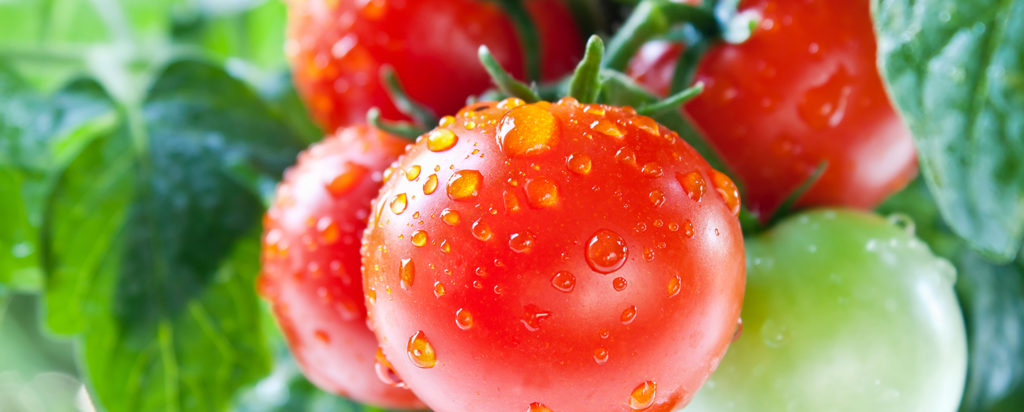
troubleshooting
-
what ate my stems right near the soil level?
Probably Cutworms. Check the soil for gray grubs about 1/2 inch (1 cm). They love to eat stems, roots, and leaves. Protect your vines with a 3 inch paper collar around the base. You can also sprinkle wood ash around the base. It helps to keep your garden weed free.
-
drooping or wilting leaves?
Needs water. Does your Pothos look wilted and droopy? Do those normally perky heart-shaeped leaves feel thinner? Your poor Pothos is crying out for a drink. Instead of doing one giant dump of water, water a little once per day for three days. You want the soil pleasantly moist, not super soggy. Your Pothos should bounce back in just a few days.
-
why do I have deformed or yellow leaves?
Likely Aphids. Look for teeny-tiny oval, and yellowish– green pear-shaped insects, clustering under the leaves. They excrete a sticky waste called honeydew (far too pleasant a name) which turns into black powdery mold. Treat with insecticidal soap.
-
why are my smaller plants turning yellow?
Sounds like Southern corn rootworm. They’re the larval form of the spotted cucumber beetle. Turn over the soil in your garden to interrupt this pest’s destructive life cycle.
-
what’s this white, powdery stuff?
It’s a fungus called Powdery Mildew. It forms white spots on the leaves or even the stems. Left un-checked it can turn the leaves yellow or even brown. Lack of airflow is the cause, so do what you can to clear around your plants. Remove infected leaves. To fight the mildew, your garden centre will have a spray containing sulfur.
-
no fruit coming through?
It’s a plant sex thing. A cucumber’s first flowers are male, followed by female flowers. Only the female flowers produce cucumbers, so you may just need to wait a bit, until the female flowers get pollinated. If there aren’t enough pollinators (like bees) in your area, you can plant flowers in your garden to attract them. Or, be the bee! Pick some male flowers and dust their pollen on the female flowers.

cucumbers
aka Cucumis Sativus
Crunch! Cucumbers are delicious in salads, and the perfect gateway to your new obsession with pickling. Their vines want to run wild, but they are trainable.
variations
Armenian Cucumber, English Cucumbers, Lemon Cucumbers and Persian Cucumbers, and almost 100 more varieties!
light
full sun
Cucumbers like about 8 hours of sunlight a day.
water + feeding
thirsty friends
The thirsty vines of the Cucumber need at least 1 inch of water per week. And if your cucumbers are out in full sun, get ready to water a lot!
toxic
non-toxic
Cucumbers are non-toxic and even make delicious, hydrating snacks for cats and dogs.
size
medium
Smaller cucumber varieties are best grown to about 4 inches (10 cm). Longer varieties like English cucumbers can grow 6 to 8 inches (15–20cm). General rule, smaller is better. Don’t let them overgrow or they may get soft and bitter.
pro tip
oh shoot!
When a vine has grown 7 leaves, pinch off the growing tip. The vine should develop side shoots that you can leave on the ground, or train up a trellis or netting.
fun fact
super hydrater
Raw cucumbers are 95% water! They’re also 100% delicious.
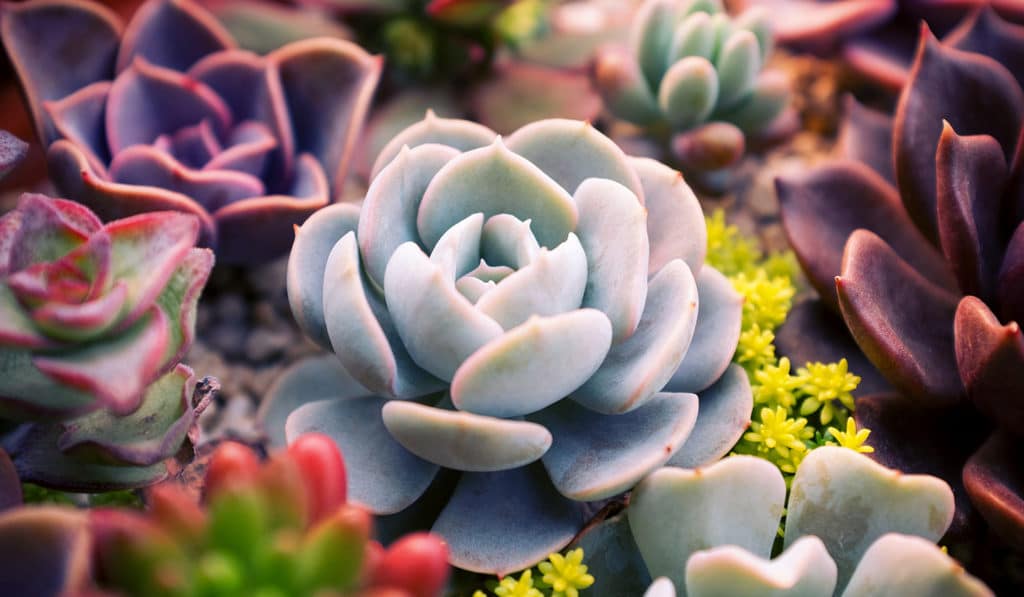
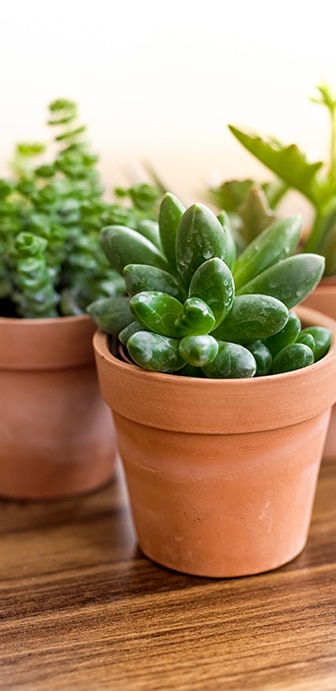
beyond the basics
-
soil & potting
These desert dwellers prefer a light, well-draining potting soil like Miracle-Gro Cactus, Palm and Succulent Potting Mix. Or, use regular potting soil and add some potting sand or perlite. A layer of sand on the top will help prevent rot. Ensure the pot has good drainage and aloe should never sit in water. Empty drainage trays if you see water collecting.
-
when to repot
Repot every 1 to 2 years in the Spring, especially with younger plants. Increase pot diameter by 2 inches every time. Want them to stay cute and little? You can stunt the growth by root trimming. In later years you can replace the top couple inches of soil instead of completely repotting.
-
propagation
Making new succulent plant babies is easy. In fact many propagate on their own. You will notice little mini versions starting grow. These “pups” can be gently separated potted as a new plant. If you’re not getting pups, remove a leaf, let it dry for a couple of days and place it on some moist soil. It should sprout roots, and voila! You have an ultra mini plant.
-
pest control
Succulents don’t typically suffer from pests, but they can sometimes get bugs. Gnats are most likely. Inspect those juicy little leaves regularly. Check out our Pest control section in Plant 101 for how to identify and deal with pests on your plant!
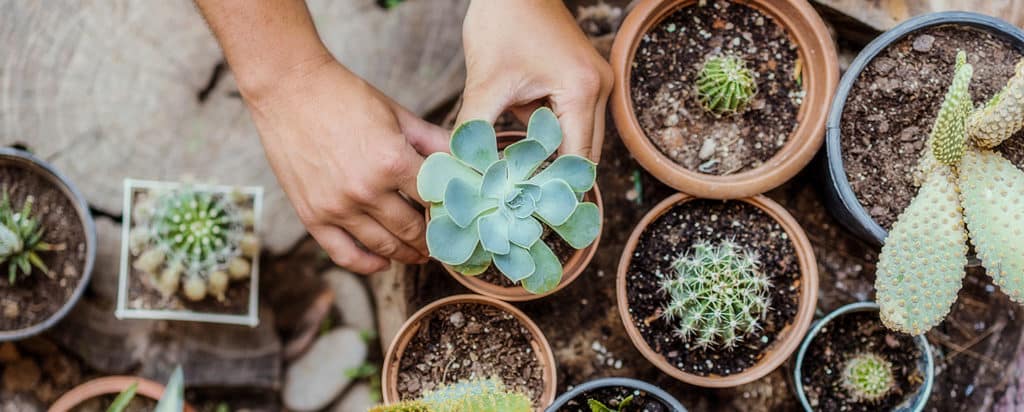
troubleshooting
-
why are the eaves turning brown, red or reddish brown?
A couple of possibilities. Maybe too much direct summer sun. Or possibly overwatering or root damage. First, moving your plant to a still-bright but less sun-blasted spot. Reduce the watering and follow our watering instructions above. If your succulent buddy still doesn’t bounce back, check for root damage.
-
what’s causing these dark spots? brown or mushy leaves?
Almost certainly too much water. This problem is no big deal if you catch it early. First, stop watering! Let’s dry out that soil. Check your pot’s drainage. Does it have a hole that allows excess water to escape? Help things dry by poking holes in the soil. This will get oxygen to the roots. You can also put the pot (with drainage holes) in a tray that’s lined with a layer of dry soil. It acts like a sponge to draw out extra moisture. Now, let’s check for root rot. Dig down and cut out any that look affected. If things are really bad, consider repotting entirely with new soil. Moving forward, water only when the soil is totally dry and make sure you water the soil, not the leaves. Water can collect between the leaves at its base, and start to rot. A thin layer of sand on top of the soil can reduce pooling water up top.
For more information check out our Plant 101 section.
-
pale or yellowing leaves?
Not enough light and/or overwatering. If the whole plant has yellowed or gone pale, it definitely needs more light. Move your friend to a brighter spot and resist the urge to overwater. Let the top two inches of soil get dry before watering again.
-
ew, what’s with the shrunken, wrinkled leaves?
Your plant needs a drink. Underwatering a succulent is hard to do, but it does happen. Give small amounts of water for three days in a row. Make sure you do this at soil level, not poured on the leaves. This is the ONE TIME it’s okay to do a little misting. A little does a lot. Resist the urge to water all at once! Your friend will plump up in a few days.
-
why isn’t my succulent growing?
Not enough light. It takes a lot of bright (mostly indirect) light to get succulents growing. If you’re not noticing any growth, or the new growth looks pale, it’s time to move to brighter spot. You may need slightly more frequent watering after the move. Note, succulents grow in slow motion at the best of times, so a little patience goes a long way.

cucumbers
aka Cucumis Sativus
Crunch! Cucumbers are delicious in salads, and the perfect gateway to your new obsession with pickling. Their vines want to run wild, but they are trainable.
variations
Armenian Cucumber, English Cucumbers, Lemon Cucumbers and Persian Cucumbers, and almost 100 more varieties!
light
full sun
Cucumbers like about 8 hours of sunlight a day.
water + feeding
thirsty friends
The thirsty vines of the Cucumber need at least 1 inch of water per week. And if your cucumbers are out in full sun, get ready to water a lot!
toxic
non-toxic
Cucumbers are non-toxic and even make delicious, hydrating snacks for cats and dogs.
size
medium
Smaller cucumber varieties are best grown to about 4 inches (10 cm). Longer varieties like English cucumbers can grow 6 to 8 inches (15–20cm). General rule, smaller is better. Don’t let them overgrow or they may get soft and bitter.
pro tip
oh shoot!
When a vine has grown 7 leaves, pinch off the growing tip. The vine should develop side shoots that you can leave on the ground, or train up a trellis or netting.
fun fact
super hydrater
Raw cucumbers are 95% water! They’re also 100% delicious.
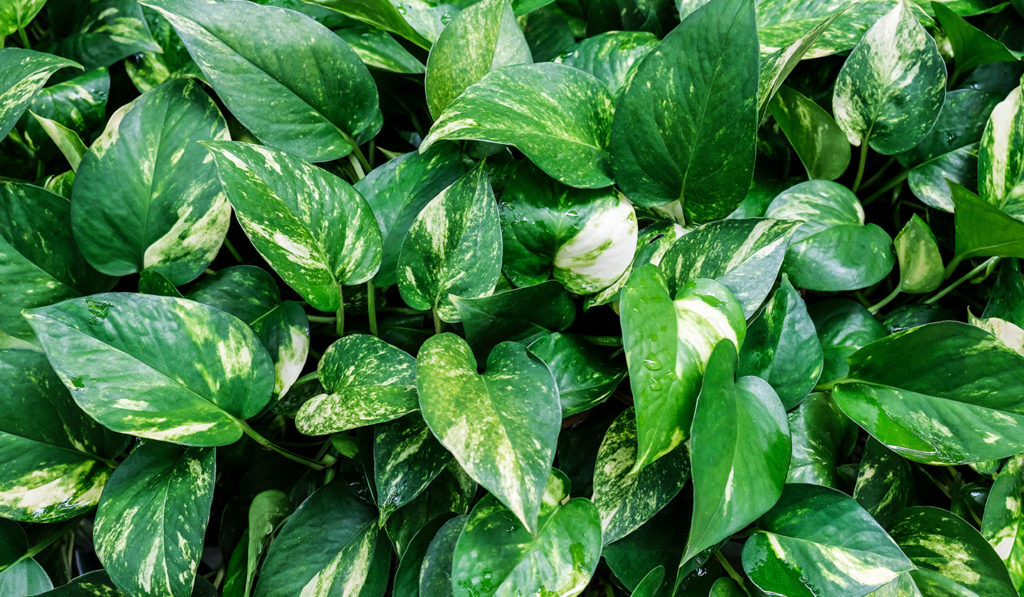

beyond the basics
-
soil & potting
Cucumbers need warm soil to germinate. Find a spot with good light and well–draining soil. Plant seeds in mounds about 1 inch deep. Give that little seed or container seedling lots of space, once they get growing, their vines really spread out to boost growth, feed the soil with dolomite lime, compost or Miracle-Gro® Shake ‘n Feed Tomato, Fruit & Vegetable Plant Food.
-
companion planting
Cucumbers work well beside asparagus, beans, Brassicas, celery, corn, dill, kohlrabi, lettuce, onion, peas, radish, and tomatoes. Avoid potatoes and sage. Sunflowers and cornflowers make a beautiful natural trellis for cucumber vines to climb. Dill attracting beneficial predatory insects that eat pests. The nasturtium flower repels pests and is even thought to improve a cucumber’s taste.
-
harvesting
Harvest time! Your cucumbers should be uniformly green, firm, and have a slightly rounded tip. They grow rapidly, so check them often. Be sure you don’t miss any under the leaves. Once they become yellow, bulbous or soft, they’re overripe. A little early is better than too late.
-
pest control
What are these little white flies? They are literally Whiteflies. They drink sap and excrete a sticky ‘honeydew’ which also encourages mould. Use sticky traps or Ortho® Bug B Gon® ECO Insecticidal Soap to keep your cucumbers healthy. Another common pest is the cucumber beetle. These little guys can be found on your seedlings, just as they’re starting to grow up. If you don’t catch these beetles soon enough, their larvae will feed on the plant and kill it. Cucumber beetles also spread bacteria and viruses when they move from plant to plant. To get rid of these little pests, try using sticky traps. You could also knock the beetles off your plant and catch them in a little piece of cardboard or a small jug.
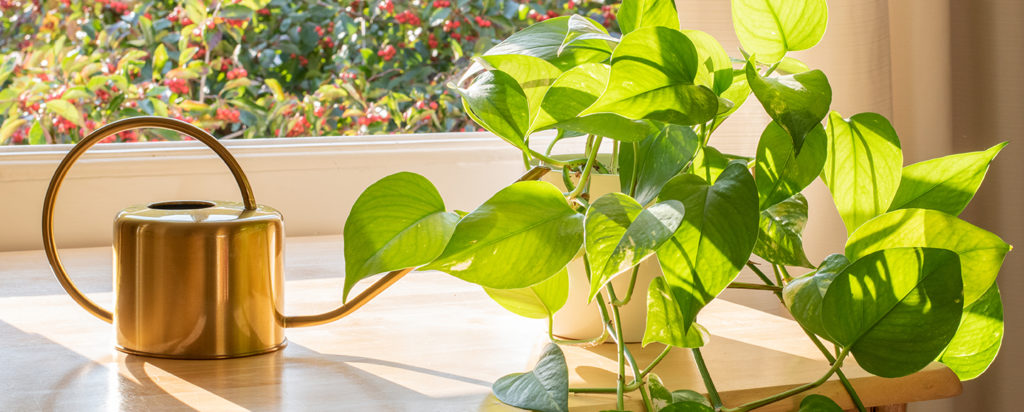
troubleshooting
-
what ate my stems right near the soil level?
Probably Cutworms. Check the soil for gray grubs about 1/2 inch (1 cm). They love to eat stems, roots, and leaves. Protect your vines with a 3 inch paper collar around the base. You can also sprinkle wood ash around the base. It helps to keep your garden weed free.
-
drooping or wilting leaves?
Needs water. Does your Pothos look wilted and droopy? Do those normally perky heart-shaeped leaves feel thinner? Your poor Pothos is crying out for a drink. Instead of doing one giant dump of water, water a little once per day for three days. You want the soil pleasantly moist, not super soggy. Your Pothos should bounce back in just a few days.
-
why do I have deformed or yellow leaves?
Likely Aphids. Look for teeny-tiny oval, and yellowish– green pear-shaped insects, clustering under the leaves. They excrete a sticky waste called honeydew (far too pleasant a name) which turns into black powdery mold. Treat with insecticidal soap.
-
why are my smaller plants turning yellow?
Sounds like Southern corn rootworm. They’re the larval form of the spotted cucumber beetle. Turn over the soil in your garden to interrupt this pest’s destructive life cycle.
-
what’s this white, powdery stuff?
It’s a fungus called Powdery Mildew. It forms white spots on the leaves or even the stems. Left un-checked it can turn the leaves yellow or even brown. Lack of airflow is the cause, so do what you can to clear around your plants. Remove infected leaves. To fight the mildew, your garden centre will have a spray containing sulfur.
-
no fruit coming through?
It’s a plant sex thing. A cucumber’s first flowers are male, followed by female flowers. Only the female flowers produce cucumbers, so you may just need to wait a bit, until the female flowers get pollinated. If there aren’t enough pollinators (like bees) in your area, you can plant flowers in your garden to attract them. Or, be the bee! Pick some male flowers and dust their pollen on the female flowers.

cucumbers
aka Cucumis Sativus
Crunch! Cucumbers are delicious in salads, and the perfect gateway to your new obsession with pickling. Their vines want to run wild, but they are trainable.
variations
Armenian Cucumber, English Cucumbers, Lemon Cucumbers and Persian Cucumbers, and almost 100 more varieties!
light
full sun
Cucumbers like about 8 hours of sunlight a day.
water + feeding
thirsty friends
The thirsty vines of the Cucumber need at least 1 inch of water per week. And if your cucumbers are out in full sun, get ready to water a lot!
toxic
non-toxic
Cucumbers are non-toxic and even make delicious, hydrating snacks for cats and dogs.
size
medium
Smaller cucumber varieties are best grown to about 4 inches (10 cm). Longer varieties like English cucumbers can grow 6 to 8 inches (15–20cm). General rule, smaller is better. Don’t let them overgrow or they may get soft and bitter.
pro tip
oh shoot!
When a vine has grown 7 leaves, pinch off the growing tip. The vine should develop side shoots that you can leave on the ground, or train up a trellis or netting.
fun fact
super hydrater
Raw cucumbers are 95% water! They’re also 100% delicious.
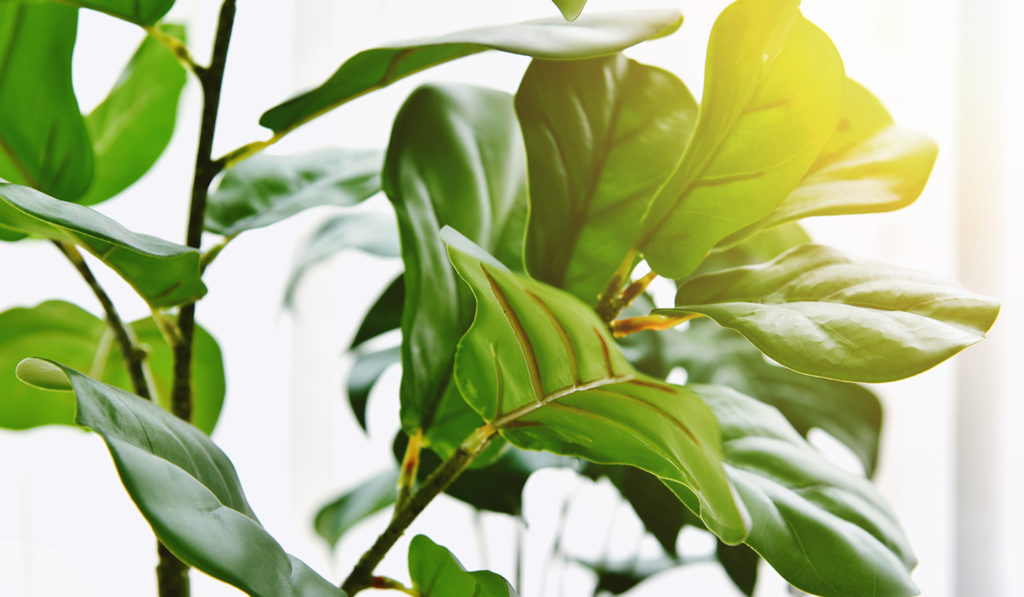
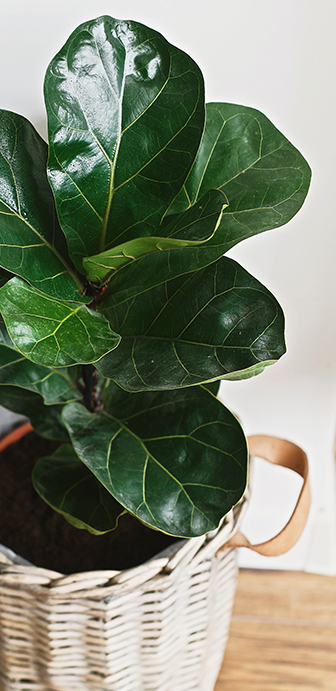
beyond the basics
-
soil & potting
Use a rich, well-draining, indoor potting soil, like Miracle-Gro® Indoor Potting Mix. Ensure your pot has good drainage. If you notice water pooling in the drainage tray, empty it.
-
when to repot
Every 2-3 years in the Spring, especially in the earlier years. Increase the pot size by 2 inches each repotting. When your Fig is all grown up, you can get away with just replacing the top few inches of soil.
-
propagation
Find a stem with 3-4 leaves and cut just below the lowest leaf. Now remove the lower leaves to make room for root growth. Place your stem in a jar of water. Figs can be stubborn to root, so add some rooting hormone to the water.
-
pest control
Fiddle Figs are prone to mealybugs, scale insects, and spider mites. Make a routine of dusting and checking under the leaves. Our pest control section in Plant 101 will help you identify and deal with pesky plant pests!
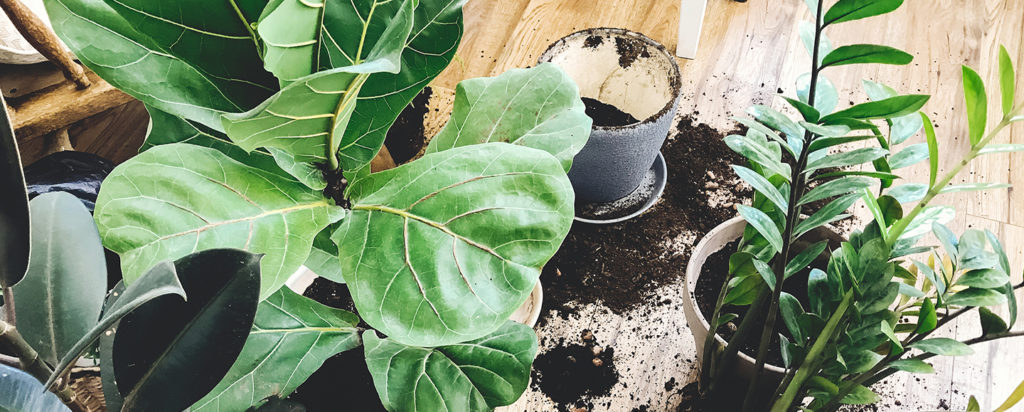
troubleshooting
-
sudden leaf loss?
Your friend is stressed out. Figs don’t like sudden changes to their surroundings. Often it’s blasts of hot or cold air a nearby vent. Moving from the nursery to your home is a shock for this gentle giant. If there haven’t been any sudden changes, it could be overly dry air. It could also be too much or too little water. Or too much or too little food. This plant is not the easiest! Review your placement and care routine, and keep doing your best. The leaves should grow back.
-
dark patches or spots on leaves?
Possibly a sunburn, or maybe leaf spot. If your Fiddle Fig gets direct sunlight it’s probably sunburn. Lots of indirect light is good but direct sun is bad. If that’s not it, it could be a fungal disease called leaf spot. Overwatering or an overly damp environment are the cause. Stop the spread to other plats, make sure leaves aren’t near each other. Remove infected leaves, including any that have fallen into the pot. If you’re misting, stop. Treat with fungicide as directed.
-
leaf tips turning brown?
Low humidity, not enough water or irregular watering. Give more attention to watering. Routines matter for this plant. Ensure it’s regular and thorough and that the entire root ball is getting wet. Check the room temp. If it’s over 75 F/24 C and the air feels dry, mist the leaves regularly and consider a humidifier. Or put the pot on a pebble filled tray of water. Make sure the pot doesn’t touch the water.
Make sure you are watering the plant thoroughly and at regular intervals, getting the whole root ball wet.
-
yellowing and wilting leaves?
Probably root rot from overwatering. Do you also notice mushy stems and/or slower growth? These are all signs of root rot. Not to worry, when caught early this is easily fixable. Reduce watering and ensure the soil dries out before watering. Check your pot’s drainage. Does it have a hole that allows excess water to escape? Help things dry by poking holes in the soil. This will get oxygen to the roots. You can also put the pot (with drainage holes) in a tray that’s lined with a layer of dry soil. It acts like a sponge to draw out extra moisture. Now, let’s check for root rot. Dig down and cut out any that look affected. If things are really bad, consider repotting entirely with new soil. For more information check out our Plant 101 section.

cucumbers
aka Cucumis Sativus
Crunch! Cucumbers are delicious in salads, and the perfect gateway to your new obsession with pickling. Their vines want to run wild, but they are trainable.
variations
Armenian Cucumber, English Cucumbers, Lemon Cucumbers and Persian Cucumbers, and almost 100 more varieties!
light
full sun
Cucumbers like about 8 hours of sunlight a day.
water + feeding
thirsty friends
The thirsty vines of the Cucumber need at least 1 inch of water per week. And if your cucumbers are out in full sun, get ready to water a lot!
toxic
non-toxic
Cucumbers are non-toxic and even make delicious, hydrating snacks for cats and dogs.
size
medium
Smaller cucumber varieties are best grown to about 4 inches (10 cm). Longer varieties like English cucumbers can grow 6 to 8 inches (15–20cm). General rule, smaller is better. Don’t let them overgrow or they may get soft and bitter.
pro tip
oh shoot!
When a vine has grown 7 leaves, pinch off the growing tip. The vine should develop side shoots that you can leave on the ground, or train up a trellis or netting.
fun fact
super hydrater
Raw cucumbers are 95% water! They’re also 100% delicious.
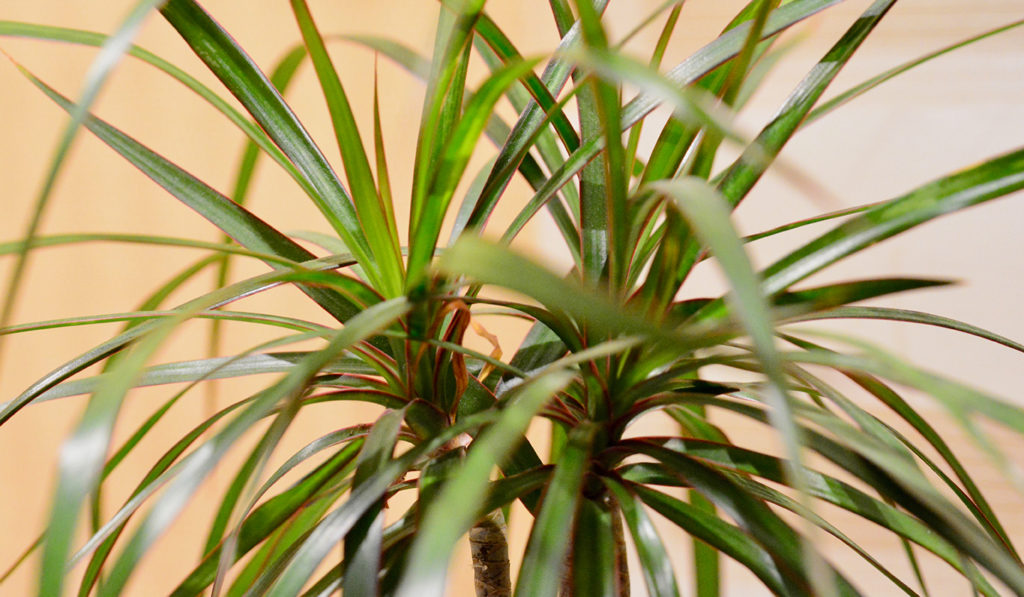
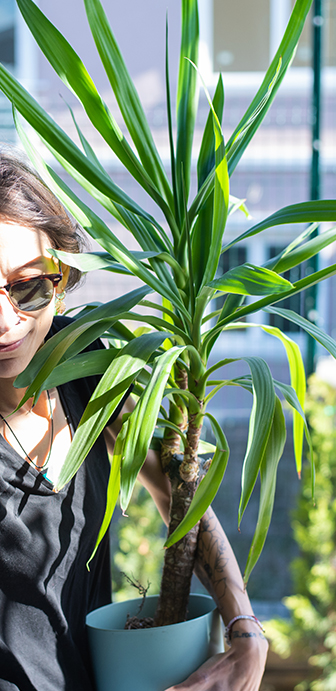
beyond the basics
-
soil & potting
This plant likes a light, well-draining soil like Miracle-Gro Cactus, Palm and Succulent Potting Mix. Or add some potting sand or perlite to regular potting soil. A layer of sand on the top will also help prevent rot. You pot must have good drainage and don’t let Dracaena sit in water. If you see water collecting in the drainage tray, dump it.
-
when to repot
Every 2-3 years in the Spring, especially in the earlier years. Increase the pot size by 2 inches each repotting. When your Dracaena is all grown up, you can get away with just replacing the top few inches of soil.
-
propagation
Cut a stem off the plant, and remove the lower leaves. Put the cutting in water to stimulate root growth. Then cut a 2 to 4 inch stub off the bottom of a stem and insert it halfway into a dry potting mix like Miracle-Gro Cactus, Palm and Succulent Potting Mix.
-
pest control
Most common pests are scale insects and mealybugs. Check under leaves when you’re dusting. See our Pest control section in Plant 101 for how to identify and deal with pests on your plant!
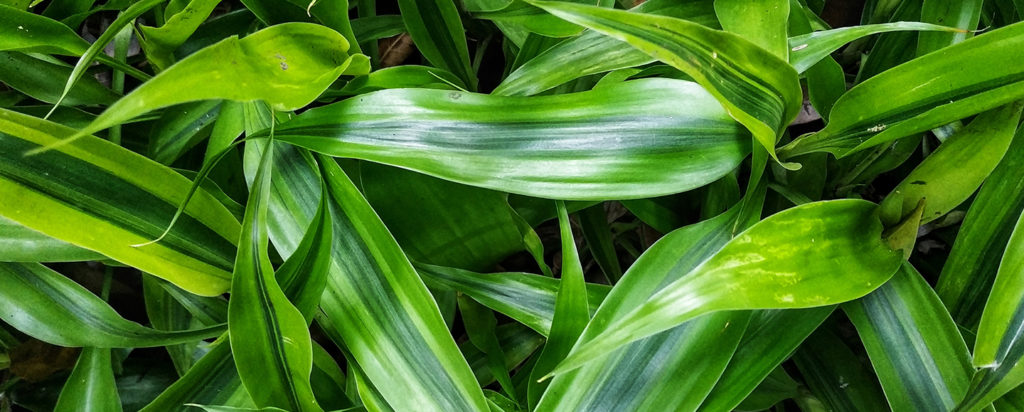
troubleshooting
-
brown tips on leaves?
Not enough water, or dry air. Most common in winter when furnaces are running.
Check soil more often and water when mostly dry. Add a humidifier to the room. Mist regularly. Put the pot on a pebble-filled tray of water. Consider moving to a room with more humidity like bathroom or kitchen.
-
yellowing leaves at the base?
Not really a problem! This is natural. That’s how Dracaenas grow. Older leaves fall off to allow for new ones. You can also gently pull off yellowed leaves. If new leaves are growing, everything is fine.
-
wilting leaves?
Overwatering or possible root rot. Wait until soil is medium dry between watering and ensure the pot has good drainage. If the wilt is bad, allow the soil to completely dry before watering. If the problem persists, check for root rot and remove any affected roots. Other moisture control techniques: Poke holes in soil to let oxygen at the roots. Put the pot (with drainage holes) in a tray lined with dry soil. Or go for a total do-over, and repot with a soil that’s formulated for drainage like Miracle-Gro Cactus, Palm and Succulent Potting Mix. For more information check out our Plant 101 section.
-
soft discoloured stems?
Overwatering causing root and stem rot. Cut back any soft, rotting stems. Remove your Dracaena from the pot and cut away any black, mushy roots. Get a sterilised new pot and start over. If the roots are all mush, you can still save your plant baby! Propagate from the top of the plant.
-
plant not growing?
Not enough light. Dracaena is cool hanging out in low light corners of your house, but it takes brighter (indirect) light to make it grow. This gives you the power to control the height of your plant! When you’re at the right height, move to a shadier spot.
